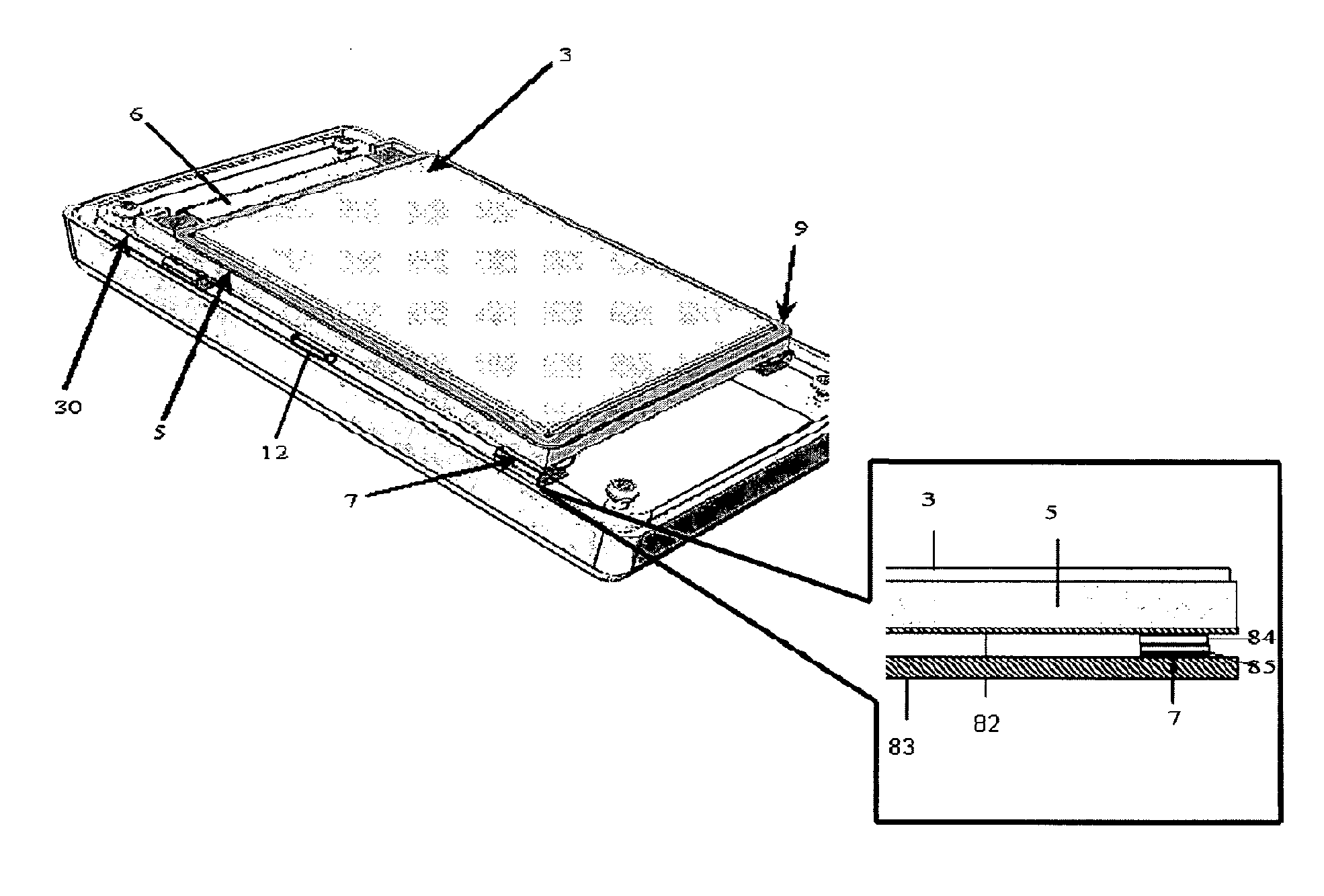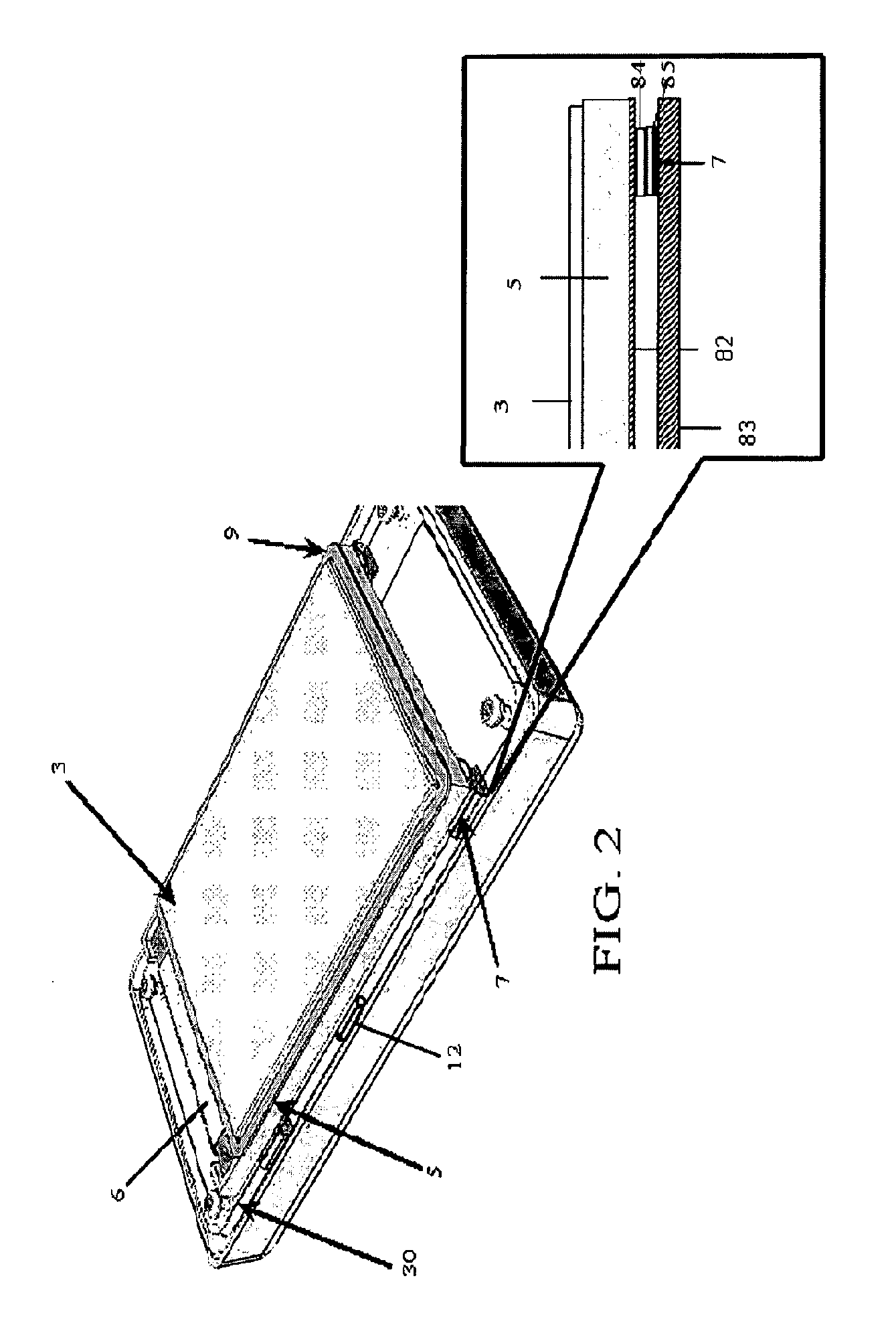Integrated pressure sensitive lens assembly
a technology of pressure sensitive lenses and integrated components, which is applied in the field of touch sensitive input panels or displays, can solve the problems of user fatigue, reduced clarity, and a fixed amount of pressure by the finger
- Summary
- Abstract
- Description
- Claims
- Application Information
AI Technical Summary
Benefits of technology
Problems solved by technology
Method used
Image
Examples
Embodiment Construction
[0035]The present invention is a touch sensitive display for an electronics device such as cell phones, PDAs, desktop phones, tablets, copy machines, or any other device that uses touch sensitive displays or panels including LCD or Organic Light-Emitting Diode (OLED) display screens.
[0036]Generally, the invention comprises a plurality (such as, for example, four) differentially-mounted pressure sensors to detect the force imparted to a primary touch surface. Two basic mechanical embodiments are disclosed. In one embodiment the sensors are mounted beneath the display module itself. Most conventional display screens (LCD or otherwise) are reinforced with a bonded protective lens. This lens is typically a 0.70 mm to 1.2 mm treated glass, protecting the LCD against cracks, scratching and also providing anti-glare coating. The existing glass lens serves as the primary touch surface, and the force imparted to the primary touch surface is transmitted through the display module and is detec...
PUM
 Login to View More
Login to View More Abstract
Description
Claims
Application Information
 Login to View More
Login to View More - R&D
- Intellectual Property
- Life Sciences
- Materials
- Tech Scout
- Unparalleled Data Quality
- Higher Quality Content
- 60% Fewer Hallucinations
Browse by: Latest US Patents, China's latest patents, Technical Efficacy Thesaurus, Application Domain, Technology Topic, Popular Technical Reports.
© 2025 PatSnap. All rights reserved.Legal|Privacy policy|Modern Slavery Act Transparency Statement|Sitemap|About US| Contact US: help@patsnap.com



